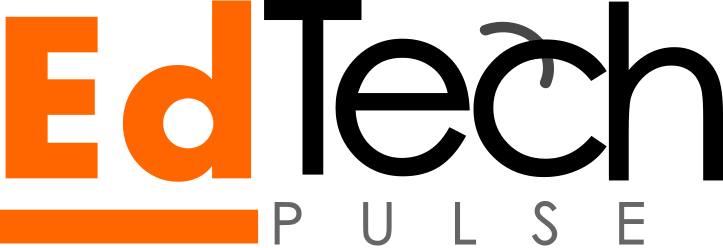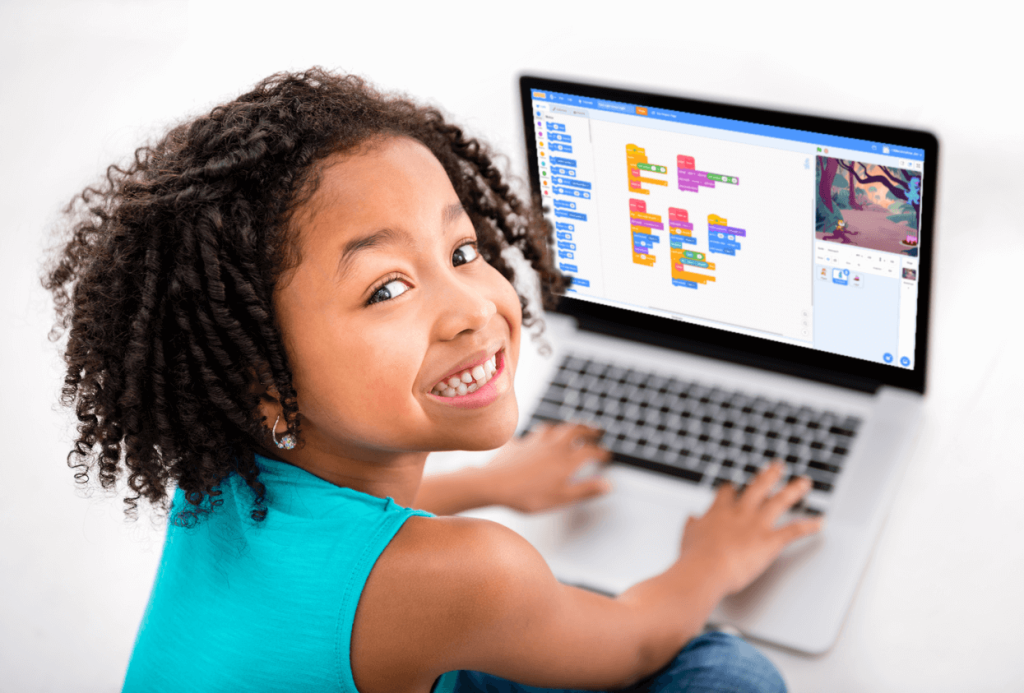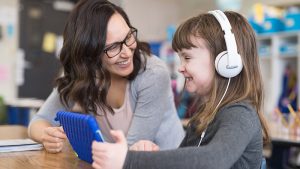For centuries, education was built around the “three R’s”: reading, writing, and arithmetic. But in today’s digital age, a fourth skill has become just as critical—coding.
We live in a world increasingly driven by software and automation. From smartphones and smart TVs to banking apps and online classrooms, code is the invisible force shaping the modern experience. Yet, while children are often passive users of technology, the opportunity—and need—to teach them how it all works is more urgent than ever.
In this week’s edition of EdTech Pulse, we make the case for coding as a basic literacy for every child. We’ll also explore beginner-friendly tools like Scratch and Python, and end with a powerful real-world story of a young learner whose life was transformed by learning to code.
Why Coding Should Be Treated Like Literacy
Just as reading and writing empower us to communicate and understand the world, coding enables us to participate in the digital economy, solve real-world problems, and create things of value. If we get back to the real basics, coding is simply the act of instructing computer to carry out an instruction using a given computer language. if computers are going to continue to be an undeniable part of our lives, the children must as well learn how to “speak” computer languages.
a. Coding Encourages Logical Thinking
Learning to code teaches children how to break complex tasks into smaller, manageable steps. This skill—called computational thinking—helps young learners develop better reasoning and analytical abilities that are applicable in all walks of life, not just tech-related fields.
b. Coding Builds Problem-Solving Skills
Coding is, at its heart, about solving problems. Whether it’s fixing a bug or designing a game mechanic that works smoothly, children are constantly engaging with cause-and-effect scenarios that require focus, patience, and resilience.
c. Coding Unlocks Creativity
Far from being a cold, rigid process, coding can be incredibly creative. Children can design games, animate stories, build music apps, or create art with code. It offers a medium of self-expression in the digital world just as crayons or clay do in the physical one.
d. Coding Prepares Kids for the Future of Work
The World Economic Forum and many global workforce reports agree: digital literacy, including coding, will be a core skill in future job markets. Whether or not a child becomes a software engineer, understanding how digital tools work will be essential in industries ranging from agriculture to fashion, medicine to logistics.
Coding is for Everyone — Not Just the “Techy” Kids

There’s a persistent myth in education and even in many households: the belief that coding is only for a certain “type” of student—typically one who excels in math or shows an early interest in computers. But this narrow view overlooks the universal benefits of learning to code and the wide variety of learners who can thrive when given the opportunity.
✨ Coding is a Mindset, Not a Stereotype
At its core, coding is about problem-solving, logical thinking, creativity, and communication—skills that apply to every subject and every type of learner. Just like some children enjoy writing stories while others like solving puzzles or drawing, coding offers multiple entry points.
- The storyteller can build interactive animations or choose-your-own-adventure games.
- The artist can use code to create digital art and interactive designs.
- The gamer can learn how their favorite games are made and build their own versions.
- The problem-solver can use code to automate boring tasks or build tools that help with schoolwork.
- The activist can build awareness campaigns, climate education tools, or community-based apps.
In other words, coding doesn’t require a child to be a tech prodigy—it simply requires curiosity, and the right environment to nurture it.
💡 Coding Supports Diverse Learning Styles
One of the beautiful aspects of coding is that it complements different learning styles:
- Visual learners benefit from platforms like Scratch and Blockly, which use color-coded blocks and animations.
- Hands-on learners thrive when they can tinker with hardware (like micro:bit or Arduino) or get immediate feedback from running their code.
- Auditory learners can follow along with guided tutorials, videos, or peer discussions.
- Kinesthetic learners can engage with physical computing kits and robotics.
Coding doesn’t demand a one-size-fits-all approach—it thrives on adaptability and personalization.
🌍 Coding Breaks Down Barriers, Not Builds Them
Another misconception is that only children from urban, well-resourced schools or tech-savvy families can or should learn to code. In reality, coding can be an equalizer. It’s a skill that doesn’t care where you come from—it only cares that you show up and try.
In many parts of the world, rural children are building solar-powered devices using microcontrollers, young girls are designing mobile apps to solve local problems, and neurodiverse learners are finding a sense of focus and flow through programming exercises.
When given access and encouragement, children from all walks of life can discover that coding is a tool for empowerment, not elitism.
🌟 Early Exposure Breaks Down Fear
Most adults who say they “can’t code” or “aren’t techy” were never taught coding in a safe, encouraging environment when they were younger. Their fear often stems from unfamiliarity, not inability.
Children, however, are naturally curious and far less afraid to make mistakes. If they are introduced to coding early—through games, stories, or fun challenges—they grow up seeing programming not as a confusing black box but as a playground for experimentation and exploration.
This is why it’s crucial to shift from thinking “coding is only for STEM kids” to understanding that coding is a language every child can learn to speak—regardless of their academic interests, personality type, or future career path.
✅ Inclusivity in Coding Education Matters
Creating inclusive coding experiences also means:
- Encouraging girls and underrepresented groups to take part in tech clubs and coding events.
- Designing projects that reflect real-life relevance—like climate action, local business support, or storytelling—to engage different types of learners.
- Training non-technical teachers to guide students using beginner-friendly platforms.
- Offering offline or low-data tools for areas with limited internet or infrastructure.
When we remove the labels, dismantle the stereotypes, and provide diverse learning pathways, we open the door for every child—not just the “techy” ones—to find their place in the world of code.
Best Tools to Introduce Children to Coding
Thankfully, teaching kids to code is easier than ever thanks to a number of well-designed, engaging platforms. Here are two of the most widely used beginner-friendly tools around the world:
🌈 Scratch (Ages 6–12)

Scratch is a visual programming platform developed by MIT specifically for kids. Instead of typing code, children drag colorful blocks to build games, animations, and stories. It’s ideal for young learners because it removes the frustration of syntax errors while still teaching fundamental programming concepts like loops, conditionals, and variables.
Examples of what kids have built using Scratch:
- Interactive quizzes on science topics
- Mini-games like maze runners or platformers
- Animated storytelling projects with voiceovers
🐍 Python (Ages 10+)

Python is one of the most popular real-world programming languages, and it’s also great for beginners thanks to its readable syntax and versatility. Once children are comfortable with the concepts of programming via platforms like Scratch, Python is a natural next step.
With Python, students can:
- Build basic calculators or simple games
- Create drawing apps using libraries like Turtle
- Analyze basic datasets or automate simple tasks
The key is to move at a comfortable pace, using engaging exercises that feel like play rather than lessons.
Taking Practical Steps. How to Ensure that More Children Get Access to Coding Education
So how do we ensure that more children get access to coding education?
Here are some steps schools and educators around the world are taking:
- Integrating coding into standard curricula starting from primary school
- Creating after-school coding clubs and bootcamps to give kids hands-on experiences
- Using gamified learning platforms like Code.org, Tynker, or Scratch to make coding feel like play
- Training teachers, even non-tech-savvy ones, to use beginner-friendly tools to introduce programming
Parents can also support learning at home by encouraging exploration with free online coding tutorials, mobile coding apps, or even offline coding games like logic puzzles and board games.
Addressing the Challenges
Of course, introducing coding to all children isn’t without its challenges:
- Access to devices and stable internet, especially in underserved communities
- Lack of trained teachers, particularly at the elementary level
- Outdated school curricula that prioritize rote learning over innovation
But these are not insurmountable problems. Low-cost solutions exist, such as offline coding tools, preloaded apps, and peer-to-peer learning networks. The important thing is to treat this with the urgency it deserves—because every year that passes without digital literacy education is a missed opportunity for a child somewhere.
Final Thoughts: A New Way of Thinking
Learning to code is not about becoming a software engineer. It’s about learning how to think, how to problem-solve, and how to understand the world you live in.
We don’t teach children to write because we expect them all to become novelists. We teach them so they can think clearly, communicate effectively, and participate in society. The same should go for coding.
By treating programming as a core literacy—and not a luxury skill—we can empower a generation to create rather than just consume, to build rather than just use, and to thrive rather than just survive in tomorrow’s world.
What Do You Think?
Do you believe coding should be taught in all schools like math or English? Have you seen a child benefit from learning to program? Let us know your thoughts in the comments, and feel free to share any helpful tools, platforms, or resources!





